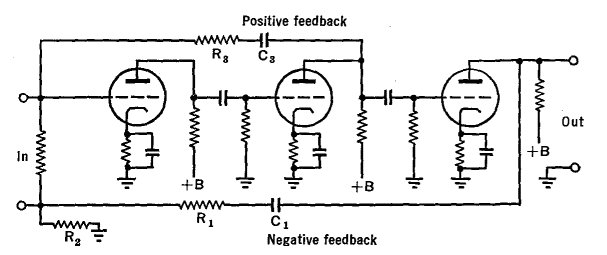| Basic Radio is a free introductory textbook on electronics based on tubes. See the editorial for more information.... |

|

Home  Amplifiers Amplifiers  Feedback Amplifiers Feedback Amplifiers  Two-Stage Degenerative Amplifier Two-Stage Degenerative Amplifier |
||||||






|
||||||
|
Two-Stage Degenerative AmplifierAuthor: J.B. Hoag
With two stages, the feedback factor FA can be made larger than with one stage, making possible to a fuller extent the potential advantages of this type of amplifier.
A three-stage unit is shown in Fig. 26 E. This operates, in the absence of R3C3, as a degenerative amplifier.
|
||||||
Home  Amplifiers Amplifiers  Feedback Amplifiers Feedback Amplifiers  Two-Stage Degenerative Amplifier Two-Stage Degenerative Amplifier |
||||||
Last Update: 2009-11-01



